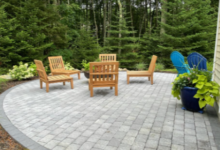Home Havoc: Unraveling the Causes Behind Structural Damage

Your home is your sanctuary, your haven from the outside world. But what happens when that sanctuary is compromised? Structural damage can turn your haven into a headache, causing not only financial strain but also emotional stress. Understanding the causes behind structural damage is the first step in protecting your home and your peace of mind.
Introduction
Structural damage refers to any harm that compromises the integrity of a building’s structure. From minor cracks to major collapses, structural damage can vary in severity but always requires prompt attention. In this blog post, we’ll explore some of the most common causes of structural damage in homes, shedding light on the factors that can threaten your abode.
Foundation Issues
The foundation is the backbone of your home, providing support and stability. When foundation issues arise, they can wreak havoc on the entire structure. Common causes of foundation problems include soil movement, poor construction practices, and water damage. Over time, these issues can lead to cracks in the foundation, uneven floors, and even structural collapse if left unaddressed.
Water Damage
Water poses a significant threat to the structural integrity of your home, making it imperative to address issues promptly, especially with the assistance of a skilled plumber in Kaysville. Whether stemming from leaks, floods, or moisture accumulation, water damage can gradually wreak havoc on your residence.
It erodes wood, corrodes metal, and fosters mold growth, all of which undermine your home’s structural stability. Implementing proper waterproofing measures, installing effective drainage systems, and conducting routine maintenance are crucial steps in thwarting water-related structural damage.
With the expertise of a qualified plumber in Kaysville, you can ensure that your home remains resilient against the damaging effects of water infiltration.
Poor Construction
A home is only as strong as its construction. Poor construction practices, shortcuts, and the use of substandard materials can all contribute to structural issues down the line. From improperly installed support beams to shoddy electrical work, cutting corners during construction can lead to costly repairs and safety hazards. Investing in quality construction from the start is key to avoiding structural damage in the future.
Natural Disasters
Mother Nature can be unforgiving, and natural disasters such as earthquakes, hurricanes, and tornadoes can cause severe structural damage to homes. While it’s impossible to control these forces of nature, there are steps you can take to mitigate their impact. Building codes, reinforced structures, and disaster preparedness plans can all help minimize the damage caused by natural disasters.
Pest Infestations
Creepy crawlies like termites and carpenter ants may seem small, but they can cause big problems for your home’s structure. These pests feed on wood, weakening beams, studs, and other structural elements. If left unchecked, a pest infestation can lead to significant structural damage and costly repairs. Regular inspections and proactive pest control measures are essential for keeping these destructive critters at bay.
Age and Wear
As with anything, age and wear can take their toll on your home’s structure. Over time, materials degrade, foundations settle, and components wear out, all of which can lead to structural issues. Regular maintenance and inspections are crucial for catching signs of wear and tear early and addressing them before they escalate into more significant problems.
Conclusion
Your home is more than just a building; it’s a reflection of you and your family. Protecting its structural integrity is essential for preserving its value, safety, and comfort. By understanding the causes behind structural damage and taking proactive measures to address them, you can safeguard your home against the havoc that threatens to compromise its stability.
From foundation issues to water damage to pest infestations, being aware of the potential threats to your home’s structure is the first step in keeping it safe and sound for years to come. Remember, when it comes to your home, prevention is always better than cure.





